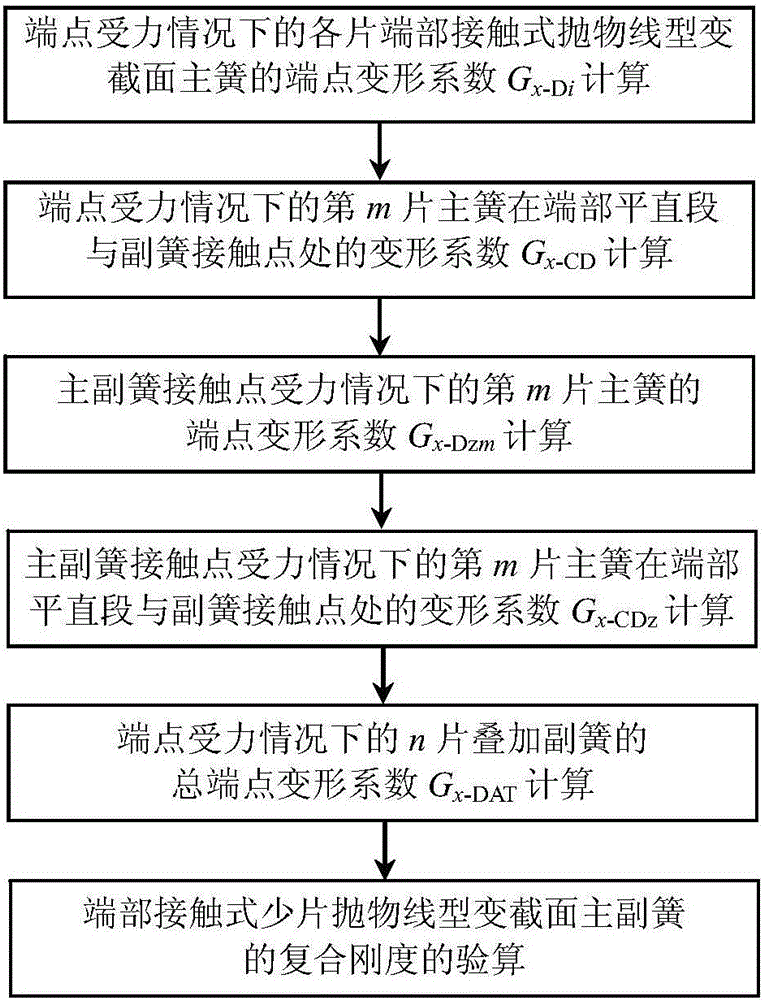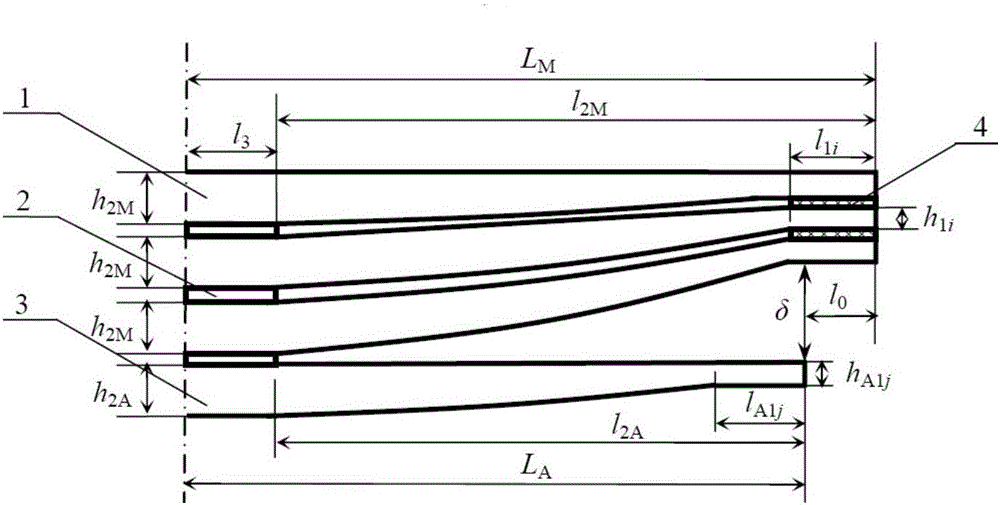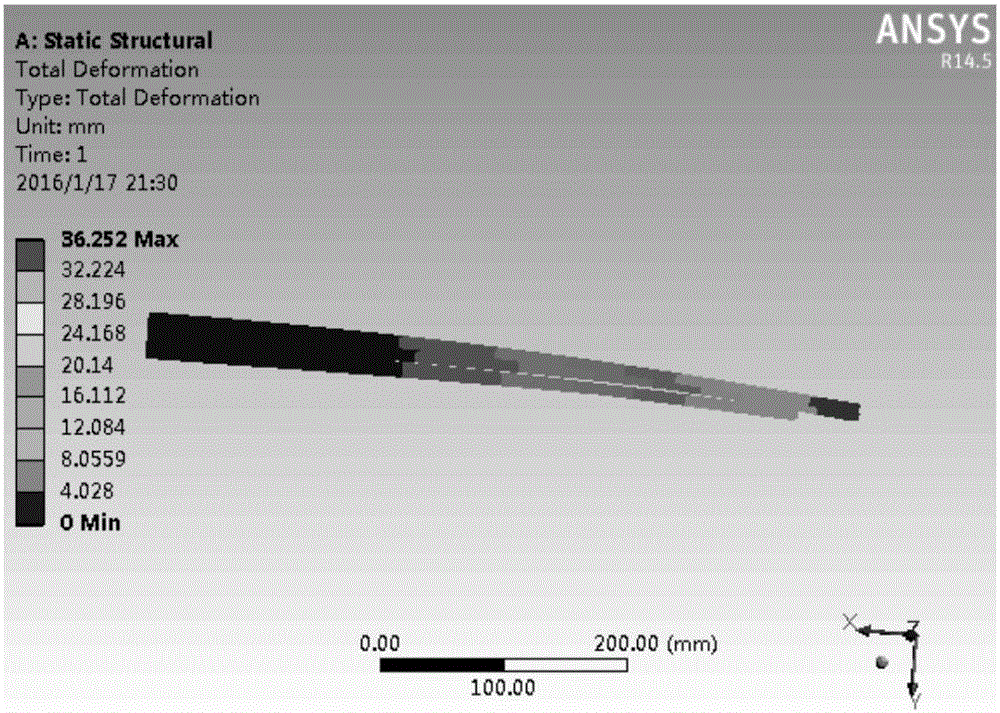Method for checking computation of complex stiffness of end contact-type main and auxiliary taper-leaf springs
A technology of compound stiffness and variable cross-section, which is applied in the field of vehicle suspension leaf springs, can solve the problem of not being able to meet the requirements of precise design and calculation of composite stiffness of the main and auxiliary springs, unable to meet the requirements of composite stiffness checking and calculation, and the length of the main and auxiliary springs are not equal, etc. question
- Summary
- Abstract
- Description
- Claims
- Application Information
AI Technical Summary
Problems solved by technology
Method used
Image
Examples
Embodiment 1
[0035] Embodiment 1: The width of the primary and secondary springs of a few-piece parabolic variable-section contact type at the end is b=60mm, the modulus of elasticity E=200GPa, half of the installation distance l 3 =55m; Among them, the number of main reeds m=2, half the length L of each main spring M =575mm, the thickness h of the straight section at the root 2M =11mm, the distance l from the root of the parabola segment to the end point of the main spring 2M =L M -l 3 =520mm; Thickness h of the straight section at the end of the first main spring 11 =7mm, the thickness ratio of the parabolic segment of the first main spring to β 1 = h 11 / h 2M =0.64; the thickness h of the straight section at the end of the second main spring 12 = 6mm, the thickness ratio of the parabolic segment of the second main spring to β 2 = h 12 / h 2M = 0.55. The number of secondary reeds n=1, the thickness h of the straight section at the root of the secondary reed 2A = 14mm, the thic...
Embodiment 2
[0060] Embodiment 2: The width of the primary and secondary springs of a few-piece parabolic variable cross-section contact type at the end is b=60mm, the modulus of elasticity E=200GPa, half of the installation distance l 3 =60mm; Among them, the number of main reeds m=2, half the length L of each main spring M =600mm, the thickness h of the straight section at the root 2M =12mm, the distance l from the root of the parabola segment to the end point of the main spring 2M = L M - l 3 =540mm; Thickness h of the straight section at the end of the first main spring 11 = 8mm, the thickness ratio of the parabolic segment of the first main spring to β 1 =h 11 / h 2M =0.67; h of the second main spring 12 =7mm, the thickness ratio of the parabolic segment of the second main spring to β 2 = h 12 / h 2M = 0.58. Number of auxiliary reeds n=1, width b=60mm, half length L of auxiliary reeds A =540mm, the distance l from the root of the parabolic segment of the auxiliary spring to ...
PUM
 Login to View More
Login to View More Abstract
Description
Claims
Application Information
 Login to View More
Login to View More - R&D
- Intellectual Property
- Life Sciences
- Materials
- Tech Scout
- Unparalleled Data Quality
- Higher Quality Content
- 60% Fewer Hallucinations
Browse by: Latest US Patents, China's latest patents, Technical Efficacy Thesaurus, Application Domain, Technology Topic, Popular Technical Reports.
© 2025 PatSnap. All rights reserved.Legal|Privacy policy|Modern Slavery Act Transparency Statement|Sitemap|About US| Contact US: help@patsnap.com



